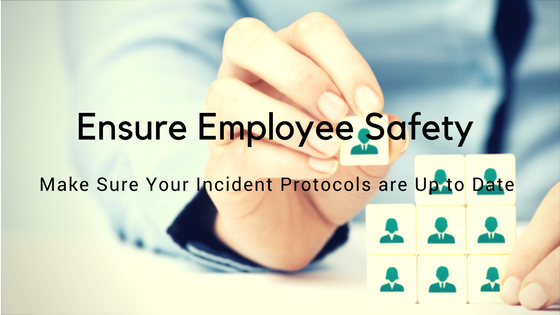Though you may take all of the proper preventative measures to decrease the chances of an injury occurring, they still happen and it is important to be prepared for them – that way you can ensure that they are handled correctly.
So What Should you do to Prepare for an Incident?
The following graphic from Confluence shows the incident response lifecycle. It is important to keep this in mind as it can help you to develop your incident protocol more effectively and efficiently.
Clear and Defined Protocols
Make sure that you have a fast and well-coordinated incident response protocol in place. This protocol should allow for an immediate response ensuring the injured parties’ safety first followed by notifying the correct regulators, updating your records to include the incident and ensuring the site preservation.
Ensure that managers are provided with key contacts and have a thorough knowledge of the protocol so that immediate notifications can occur.
NOTE: Oftentimes notification issues occur when there is a disconnect between corporate, human resources, legal functions and management on the ground. The notification system should be tested when conducting emergency drills to ensure there will be no disconnect if an incident occurs.
After the injured party has been properly taken care of and is safe, an audit of the incident should occur. Why did this happen? What steps can be taken to avoid similar incidents from occurring in the future? Was the response protocol effective? If not how can it be improved?
Practice Makes Perfect
Ensure that both your managers and employees are trained on the latest version of the protocol. Remember the protocol is only effective if it is active and can be carried out quickly and efficiently.
Plan for some practice sessions throughout the year to ensure everyone is aware of what they should do if an incident should occur
Make Sure Your Legal Team is Ready
Make sure legal is involved early on. The first 24 hours of incident response and investigation are critical. Depending on the severity of the accident multiple legal actions may arise that is why having a clear notification system in place is key.
Your incident protocols should “triage’ incident types and provide for legal support if needed.
Communication is Key
Ensure key personnel are appointed to incident management. The incident response protocol works best when there is key internal personnel managing liaison with various stakeholders including regulators following the immediate notification requirements. This will also help to create a clear picture for these individuals without having potentially conflicting information coming from a variety of sources.
The key personnel for incident management will also have a point person who will determine whether the incident is notifiable and whether written or verbal notification is required and will make the decision to determine whether legal or other support is required
Taking the above steps will help to ensure the proper process is followed when an incident occurs. Make sure that you practice the process so that it can be easily and properly followed in the event of an incident. You may also wish to consider creating posters to place within your facility so that they can easily be referenced if something should occur.
Did we miss something in how you can prep for an incident? If so please comment below and we will add it!
Sources:
Internet2 Wiki. (n.d.). Retrieved October 23, 2017, from https://spaces.internet2.edu/display/2014infosecurityguide/Incident Management and Response


